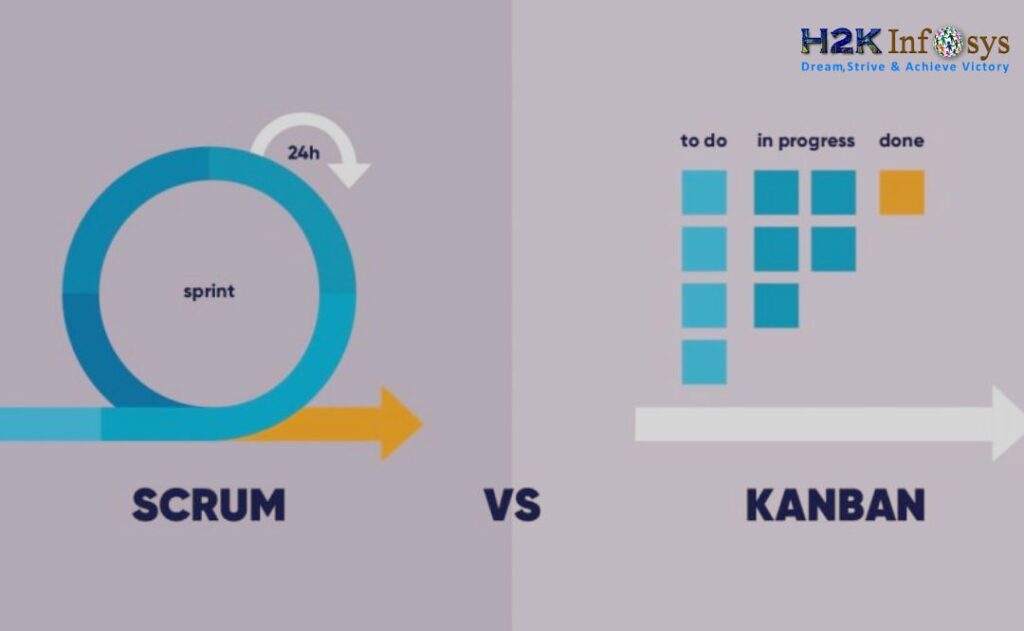In today’s competitive software industry, the role of a Software Tester or Quality Assurance (QA) Tester is more crucial than ever. Whether you’re just starting out or an experienced tester, understanding the types of questions you’ll encounter during an interview is vital to standing out. As software development cycles become faster, companies are looking for skilled testers who not only know the basics but also have practical, hands-on experience.
In this comprehensive guide, we’ll cover the most common software tester interview questions, how to answer them effectively, and tips on navigating through tricky scenarios. We’ll also dive into the importance of Quality Assurance Tester Certification and the skills you’ll gain from Software Tester through online courses like those offered by H2K Infosys.
By the end, you’ll have a clearer understanding of what interviewers are looking for, how to answer technical questions confidently, and how enrolling in a Quality Assurance Course can significantly boost your career prospects.
Common Software Tester Interview Questions
What is Software Testing? Why is it important?
This is typically one of the first questions asked during a QA interview. The hiring manager wants to gauge your understanding of testing fundamentals.
How to Answer:
Software testing is the process of verifying that a software application functions as expected, ensuring that it meets user requirements, is free of defects, and performs reliably in different environments. Testing is crucial because it helps identify bugs and inconsistencies before the software is released, saving the company time and money, and improving user satisfaction.”
Pro Tip: Use real-world examples, such as a project you’ve worked on where testing saved time or prevented a costly bug in production. Highlighting the business impact of testing will show that you understand its importance.
What are the different types of software testing?
Hiring managers want to know how familiar you are with various testing methodologies.
How to Answer:
There are several types of software testing, including:
- Manual Testing: Where tests are executed manually without using automation tools.
- Automated Testing: Utilizing tools like Selenium or QTP to automate test scripts.
- Unit Testing: Verifying that individual components of the software work correctly.
- Integration Testing: Testing the integration between different components to ensure they work together.
- System Testing: Checking the entire system’s functionality end-to-end.
- Regression Testing: Ensuring that new updates don’t break existing functionality.
- User Acceptance Testing (UAT): Testing with real users to ensure the system meets their needs.”
Pro Tip: Explain when you’ve used these methods in a real-world scenario, and why you chose one over another. This showcases your critical thinking in applying the right type of testing.
Can you explain the difference between Verification and Validation in testing?
This question tests your knowledge of the QA lifecycle and the role each step plays in product quality.
How to Answer:
Verification is the process of ensuring that the product is being built according to the specifications and requirements, typically done through reviews and meetings. Validation, on the other hand, is ensuring that the product meets the user’s needs and expectations, usually done through actual testing.
Pro Tip: To give a well-rounded answer, include an example of a time when your verification or validation process identified a critical issue.
What is a Test Case, and how do you write one?
Test cases are fundamental to any software testing process. Interviewers want to see if you understand the structure and purpose of test cases.
How to Answer:
A test case is a set of conditions or variables under which a tester will determine if a system is working correctly. It typically includes:
- Test Case ID
- Description
- Preconditions
- Test Steps
- Expected Result
- Actual Result
- Pass/Fail Status Writing clear and concise test cases ensures comprehensive test coverage and simplifies the defect-finding process.”
Pro Tip: If you’ve ever written a complex test case that uncovered a critical defect, mention it here to demonstrate your hands-on experience.
How do you prioritize test cases in a scenario where time is limited?
This is a test of your problem-solving skills and understanding of risk-based testing.
How to Answer:
When time is limited, I prioritize test cases based on risk and business impact. High-risk features that are critical to business operations or customer satisfaction are tested first. I also focus on areas with frequent defects or recent code changes. Regression testing is essential to ensure that no existing features are broken due to the changes.
Pro Tip: Provide an example from a past project where you had to prioritize tests due to time constraints, explaining your decision-making process.
What tools do you use for bug tracking and test management?
Your answer here gives insight into your familiarity with industry-standard tools.
How to Answer:
I have experience using tools such as:
- JIRA for bug tracking and project management.
- TestRail for test case management.
- Selenium for automating web application testing.
- Postman for API testing. Using these tools helps streamline the testing process and ensure that all team members can collaborate effectively.”
Pro Tip: If the company uses a specific tool (often mentioned in the job description), research it ahead of time and mention that you’re familiar with it or willing to learn.
Technical Software Tester Questions
What is an API, and how do you test it?
Testing APIs is a critical part of ensuring that different software systems can interact effectively.
How to Answer:
An API (Application Programming Interface) allows two applications to communicate with each other. Testing an API involves verifying that the API responds as expected for different requests, such as GET, POST, PUT, and DELETE. I use tools like Postman to test APIs by sending requests and validating the response against the expected data, status codes, and performance metrics.
Pro Tip: Explain how you’ve tested APIs in previous projects, and mention any challenges you encountered, like handling authentication or response validation.
What is Selenium, and how do you use it for automation testing?
Selenium is one of the most popular automation testing tools, and hiring managers will often expect you to be familiar with it.
How to Answer:
Selenium is an open-source automation tool that allows testers to automate web browsers. I use Selenium to write automated scripts for repetitive test cases, especially for regression testing. By writing scripts in languages like Java or Python, I can automate tasks such as form submissions, navigating between pages, and validating UI elements.
Pro Tip: If you’ve created an automated testing framework using Selenium, mention it. This shows that you can apply your knowledge to build scalable solutions.
How do you perform database testing?
Database testing ensures that data is stored correctly and that data integrity is maintained.
How to Answer:
Database testing involves validating data stored in the database to ensure it is accurate, complete, and adheres to business rules. I perform database testing by writing SQL queries to validate that:
- Data is correctly inserted, updated, or deleted.
- Data integrity constraints are maintained.
- Stored procedures are executed correctly. I also check performance metrics to ensure the database handles queries efficiently.
Pro Tip: Highlight a project where database issues were discovered during testing and how you resolved them, showcasing your problem-solving skills.
Behavioral and Scenario-Based Questions
Describe a time when you found a critical bug late in the development process. How did you handle it?
Behavioral questions like these are designed to assess your ability to handle pressure and problem-solving.
How to Answer:
In one project, I found a critical bug just before the release deadline. The bug caused data loss when users updated their profiles. I immediately reported it to the development team and worked overtime to help them fix it before the deadline. To prevent similar issues in the future, we implemented a more comprehensive testing phase earlier in the cycle, including detailed regression testing.
Pro Tip: Emphasize your teamwork and how you stayed calm under pressure. Companies value testers who can find solutions quickly without causing unnecessary panic.
How do you stay up-to-date with the latest trends in software testing?
QA is a field that evolves rapidly, so employers want to know if you’re committed to continuous learning.
How to Answer:
I regularly attend webinars, read industry blogs, and participate in QA forums like Stack Overflow and Reddit. I also take online courses through platforms like H2K Infosys, which offer specialized Quality Assurance Tester Certification programs that help me stay current with the latest trends in automation, AI testing, and cloud-based testing tools.
Pro Tip: Mention any specific certifications or courses you’ve taken recently to demonstrate your commitment to lifelong learning.
Why Hands-On Training Matters in QA
While preparing for interviews is crucial, practical experience often sets apart successful candidates. Employers value testers who can apply theoretical knowledge to real-world problems. Enrolling in an Online Software Quality Assurance Tester Training course provides learners with hands-on projects, mock interviews, and exposure to industry-standard tools like Selenium, Jira, and LoadRunner.
Case Studies: Real-World Scenarios for QA Testers
Case Study 1: E-commerce Bug Detection
An e-commerce platform noticed a significant drop in cart conversions. After rigorous manual and automated testing, the QA team discovered a bug causing the cart to malfunction during high-traffic periods. A fix was implemented, and the platform’s conversion rate increased by 15%.
Case Study 2: Performance Testing for a Banking App
A banking app experienced performance issues, leading to customer dissatisfaction. The QA team conducted load testing using LoadRunner, identifying that the app couldn’t handle more than 10,000 concurrent users. After optimization, the app smoothly supported up to 50,000 users, enhancing customer experience.
Key Skills for Success in Software Tester
To excel as a QA tester, mastering the following skills is essential:
- Attention to Detail: Identifying hidden bugs requires meticulous attention.
- Problem-Solving: Testers must think critically and propose solutions to complex problems.
- Technical Proficiency: Knowledge of testing tools, scripting languages, and databases is vital.
- Communication: Effectively reporting bugs and collaborating with developers is a key aspect of the role.
- Adaptability: QA testers must quickly adapt to new tools and technologies as the industry evolves.
The Role of Online Training for Testers
As the demand for skilled Software testers grows, Training for Testers has become more accessible through online platforms. Courses like those offered by H2K Infosys provide students with flexible learning options, practical experience, and a curriculum tailored to industry demands. Key benefits include:
- Access to Real Projects: Learners work on actual projects, gaining insights into the testing process.
- Flexible Scheduling: Online courses accommodate the learner’s schedule, making it easier for working professionals to upskill.
- Expert-Led Classes: Industry veterans lead courses, providing learners with valuable mentorship.
Benefits of Earning a Quality Assurance Software Tester Certification
A Quality Assurance Tester Certification validates your expertise, making you more competitive in the job market. Key advantages include:
- Industry Recognition: Certifications are recognized across industries, enhancing your employability.
- Enhanced Skillset: Certification programs cover essential topics like manual testing, automation, and performance testing.
- Career Growth: Certified QA testers are more likely to secure higher-paying roles in prestigious companies.
According to Glassdoor, the average salary of a certified QA tester is $74,000, and this figure rises with experience and additional certifications.
Conclusion
Preparing for a software tester interview requires more than just theoretical knowledge. It demands practical experience, hands-on training, and the ability to communicate effectively in high-pressure environments. Whether you’re navigating the basics of manual testing or delving into automation, having a solid grasp of industry-standard tools, processes, and best practices will set you apart.
By enrolling in H2K Infosys’ Online Quality Assurance Training, you’ll receive the comprehensive preparation needed to ace your interviews and excel in your QA career.
Key Takeaways
- Master Key Concepts: Ensure you understand manual, automated, regression, and performance testing.
- Practice Communication: Clear and concise communication of bugs is crucial for team collaboration.
- Stay Updated: Continuous learning through certifications and hands-on projects is essential.
- Hands-On Experience: Participate in real-world projects to build confidence in your testing abilities.
Enroll in H2K Infosys for Practical Software Tester Training
Want to boost your QA career and ace your next interview? H2K Infosys offers a comprehensive Free Demo class for Quality Assurance Tester Course that combines theoretical knowledge with practical, hands-on experience. Our courses are tailored to industry needs, ensuring that you’re ready to take on real-world challenges.
Join today and take the next step toward becoming a certified software tester. Enroll now at H2K Infosys and kickstart your journey toward a rewarding QA career!



























